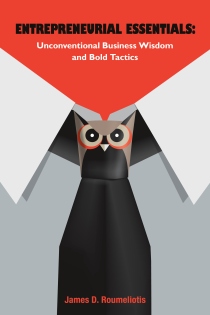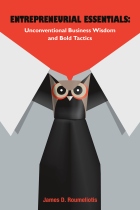
Businesses usually focus on three types of capital such as Financial, Human and Intellectual but you rarely hear about a fourth one ─ Trust Capital. This is when a business and its brand possess honesty and considered trustworthy by its clients, employees and stakeholders. A brand is mainly a symbol, mark, logo, name, word, and/or sentence that companies use to distinguish their product from others. However, it is a person’s perception of a product, service, experience, and/or organization which matters a great deal. For those reasons, a brand is considered a promise which is a value or experience a company’s customers can expect to receive every single time they interact with that company ─ also known as touch points. The more a company can deliver on that promise, the stronger the brand value in the mind of customers and employees.
Defining each business capital
Financial Capital can be defined as an investment asset whose value is derived from a contractual claim of what they represent. These are liquid assets as the economic resources or ownership can be converted into something of value, known as cash, financial instruments or securities. It is liquidity available its disposal to operate efficiently.
Human Capital, also known as human resources and manpower among other organizational division names/designations used, is the group of people who work for or are qualified to work for an organization—the “workforce.” Human Capital or “people talent” helps creates economic wealth for the business. Human capital also includes assets like education, training, intelligence, skills, health, and other things employers value.
Intellectual Capital also known as “IP” refers to creations of the mind, such as inventions; literary and artistic works; designs; and symbols, names and images used in commerce. IP is protected in law by, for example, patents, copyright and trademarks, which enable a business or individuals to earn recognition or financial benefit from what they invent or create.
As for Trust Capital, it is an intangible asset whereby confidence in the leadership, integrity, credibility and responsibility of a business to deliver its promises to its customers, employees and its stakeholders exists. Trust capital is what the business utilizes during a setback or crisis when it needs to defend itself in an unfortunate and unexpected circumstance. The trust capital the business has built over time can help to weather the crisis of character.
Additionally, some of the most important traits your customers associate with your brand are honesty and trustworthiness. Consequently, presenting a brand that is honest and trustworthy can make it easier to gain and retain your customers. It is something that takes time and plenty of effort to build but can also be scarred overnight.

Ways to build Trust Capital
1. Adopt a Trust Agenda within the organization, led by top management. Build a strong corporate brand with leadership, credibility, integrity and responsibility at the heart of its organizational values and behaviors. Do not just making empty promises. Failing to match behavior and expected results with merely talk results in loss of credibility and trust.
2. Recognize that trust is not the same as reputation – both are equally important and should be treated so. Reputation is the backward-facing evaluation of past experiences with a company or brand. Trust is the forward-facing evaluation of consumer expectations of future experiences.
3. Focus on customization and personalization but know your limits. Trust plays an important role in both. The more a consumer trusts a brand, the more the consumer will share, and then the more personal a brand can be. Differentiate between customization and personalization.
4. Acknowledge that every consumer is value conscious and that consumers determine value, not companies. Value as perceived by consumers is what matters. All consumers want to think of their purchase of a product or service as a good, fair value. Best value is more than merely low price, nowadays it is the total customer experience and how a brand makes them feel.
5. Create brand attributes. Those attributes are what you want to share with your customers. Part of discovering your brand attributes is also defining a brand tone. Every communication you have with your customers should display your brand attributes and tone. These communications should include website content, FAQ page language, and social media posts. What differentiates your brand? It can make a huge difference in how much information customers will trust your company with.
In addition, consider ways to build customer confidence by:
- Take ownership of customers’ concerns and complaints.
- Reassure customers by reviewing what they have stated and confirm you understood them before working on and providing an answer or solution.
- Keep customers posted in a timely manner.
- Always exude calmness, be tactful and remain professional.
- Encourage feedback.

In the end
The four Cs to build organizational value are Financial, Intellectual, Human and Trust. Many companies focus on the 3Cs of Capital, Financial Capital, Intellectual Capital and Human Capital. Now, they must add a fourth C, Trust Capital. Trust Capital creates value for the organization and helps protect the business when there is a credibility issue or a crisis. Trust Capital takes time to build but can be destroyed very quickly. Senior Management/Executives must think of themselves as the organization’s ‘Chief Trust Officer’. Trust is earned over a long term. However, trust can be lost quickly. Facebook, We Work, Boeing and VW are good examples of how trust can dissipate over short sighted decisions and/or poor corporate decisions. How management behaves after a crisis is critical because actions speak louder than words. However, if a brand has plenty of prior trust capital, it can eventually help stabilizes and return the situation to their trusted relationships with customers, employees and stakeholders.
___________________________________________
Request your TWO FREE chapters of this popular book with no obligation.




















